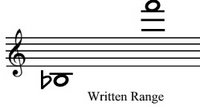This is a continuation from the last post about choosing saxophone models. This entry is more detailed about individual saxophones and how they play. When choosing a saxophone make sure you try them out and see what fits you best. Ebay is another source for instruments. Be weary about what you buy because most horns you do not know the condition before you buy it. But this can be a cheaper option than buying it from a music store. Prices are based of Woodwind Brasswind or otherwise noted. Prices are subject to change.
Bandnow brand is a low quality band instruments for a cheap price. They don't play in tune very well and you should be cautious if you decide to buy this horn. The metal alloy doesn't have a lot of overtones which makes the overall tone of the instrument poor. You may like this horn because of the cost.
The alto saxophone costs $319 and the tenor saxophone costs $379 for a new instrument.
LA Sax brand can be a decent horn depending on what you want. The horns tend to be heavier. The tone quality is brighter and more edgy. The lacquer on these horns are colored. Although they look cool, they don't play very good. The tone is poor and intonation is mediocre. The intonation of the soprano saxophones are extreme. Some of their professional lines horns (the jazz series) are nice. If you exclusively play jazz these horns may suit you.
Alto:
700 series (beginner)- $900
750 series (colored)- $1,325
Chicago Jazz series-$1,399
Model six- $2,395
Tenor:
850 series (raw, non-lacquered)- $1,497
Chicago Jazz series- $2,399
Allora brand is a new brand out there. Their horns have a nice sound but have a lot of resistance compared to other brands. These German made horns have a big sound and a little on the bright side. Again if you are exclusively a jazz player these horns would work well. The finishes on the horn are unique as well.
Alto:
649 series- $829
869 "big boss" series- $1,199
501ET (sand finish)- $1,210
502 series- $1,270
Tenor:
679 series- $1,195
879 "big boss" series- $1,695
Sand finish- $1,799
Conn brand is what I call a "vintage brand gone downhill". They have a lot of vintage instruments that are collectibles now. Since they were bought out by Selmer, the quality of the instruments are not very good. I don't suggest buying a new Conn. The tone is thin and edgy, the intonation is poor, and the horn is not durable and get out of adjustment often.
Alto:
Director- $570
24M Series- $659
Vintage Wonder- $1,059
Lady Face 6M- $1,858
Tenor:
10M Series-$1,799
Jupiter brand is a popular instrument among unexperienced saxophonists. The horn is cheap but yet is reasonable in quality. If you decide to get a Jupiter, they make good beginning/intermediate horns. I suggest the 767GL/787GL for beginners.
Alto:
767GL- $949
869SG- $1,515
969GL- $1,539
Tenor:
787GL- $1,169
889 Artists- $1,739
King brand horns are similar to the Conn. Their quality isn't that good and the tone/intonation is poor. However, these horns are cheap to buy. King currently only produces one alto sax.
Alto:
665 Series- $680
Yamaha brand is one of the two leading companies of saxophones. I highly recommend all the instruments with a Yamaha name. Their beginner model all the way through their custom line are all really nice horns. The YAS-23 (beginner horn) is durable, in tune, and has a good tone. From my experience, the tone of a Yamaha doesn't drastically change from a student model to the professional line. The big difference is how they play and respond. Of all the student model horns, the YAS-23/YTS-23 is the most used and recommended. The price of these horns are also very reasonable. You can find used 23's everywhere. However I offer a word of warning, be careful about the previous condition of the saxophone. Young students sometimes are not careful how they treat their saxophone. The intermediate horns are also nice to have. A student who is in middle school or high school would upgrade to a YAS-475 or an Allegro (which is not in production an longer). I highly recommend the professional line horns; they play like butter. I would bypass the YAS-62 and go for the custom series. The ribs are light, the horn responds with ease, there is little resistance, the intonation excellent, and the action quick. The horns are a little on the bright side compared to a say a Selmer, but can be altered by playing style and mouthpiece/reed combination. This horn is great for both jazz and classical playing. The downside to this horn is it's hard to find a mouthpiece to work well with it. The stock mouthpiece works well but to find another mouthpiece, try before you buy. Woodwind Brasswind gives you the option sending mouthpieces to your home and allowing you to send back what you don't like.
Alto:
YAS-23- $400-$500 used on ebay
YAS-475- $1,585
YAS-62- $1,961
YAS-82Z- $2,683
YAS-875- $2,683
Tenor:
YTS-23- $500-$750
YTS-475- $1,758
YTS-62- $2,305
YTS-82z- $2,735
YTS-875- $3,219
In a future entry I'll continue a write up on more saxophone models.

